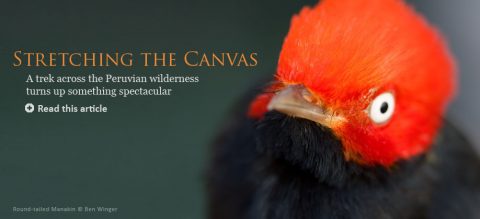View From Sapsucker Woods: In Support of the Land and Conservation Water Fund
by John Fitzpatrick
April 15, 2010

A century ago, spearheaded by environmentalist-president Teddy Roosevelt, our government began protecting vital natural places and resources through a series of innovations that have stood the test of time. Three pillars of federal investment in conservation—National Parks (including National Monuments and Wild and Scenic Rivers), National Wildlife Refuges, and National Forests—protect and manage natural areas to foster native biodiversity, provide for their recreational enjoyment by all people, and safeguard their sustainable use for all future generations.
Nearly a half-century ago, Congress passed an historic bill intended to secure permanent funding for protecting our country’s natural places and ecosystems. The Land and Water Conservation Fund Act of 1965 earmarked a portion of the annual proceeds gained from depleting nonrenewable resources (outer continental shelf mineral, oil, and gas leases) to help protect treasured areas for conservation and public recreation. Since 1965, the Land and Water Conservation Fund (LWCF) has provided the main funding for purchasing (from willing sellers) in-holdings, strategic expansions, and buffer areas protecting our national parks, wildlife refuges, forests, grasslands, river systems, and seashores. The act also provided that a portion of these funds would be transferred to the states, and through them, to local governments, for similar purposes. The LWCF has provided more than $13 billion to protect and augment our most spectacular and cherished wild areas, from the Grand Canyon to the White Mountains, and from San Francisco Bay to Cape May.
For decades the LWCF has been authorized to receive $900 million annually from offshore oil and gas revenues. Amazingly, however, this amount actually has only been appropriated once (1998) in the 46 years since the act was passed. In today’s dollars, the original $900 million authorization would yield $3 billion annually, but recent allocations have averaged less than $200 million, including a low of $113 million in fiscal year 2007. Meanwhile, as human populations expand and rural areas across the country yield to suburban sprawl, the list of highest-priority acquisition opportunities vastly outstrips the meager funding available. Within our National Parks alone, 1.9 million acres of in-holdings available from willing sellers remain to be acquired. Chronically under-funded National Wildlife Refuges scream for the means to purchase crucial wetlands and upland buffer habitats within long-established acquisition boundaries. Indeed, for the refuge system alone, it would take 20 years of a fully funded LWCF to purchase these already-identified acquisition targets.
Since 1965 the recorded balance in offshore oil revenues credited to, but not appropriated from, the LWCF is $17 billion. Imagine the scale of conservation that could be accomplished if we decided to “settle up” and expend these technically already conservation-committed dollars! Much more realistic and urgent, however, is the need to begin committing the full, legally authorized LWCF amount every year within our federal budget. Since taking office, Secretary of the Interior Ken Salazar has announced repeatedly his commitment to “fully funding the Land and Water Conservation Fund,” but previous administrations have made similar statements, without result. Today signs are again promising: the proposed fiscal year 2011 federal budget requests more than $600 million in LWCF funding (including $384 million for federal land acquisition, $100 million for the USDA Forestry Legacy Program, $85 million for the cooperative endangered species fund, and $50 million for state transfers and grants, according to the National Fish and Wildlife Foundation), and bills are being discussed in Congress that would mandate fully funding the LWCF.
Some might argue that during financial crisis, spending money on land conservation is wrong, but in many cases acquiring lands within acquisition boundaries actually reduces management costs. Furthermore, with land prices nationwide at historic lows and willing sellers desperately looking for buyers, the opportunities present today might never look as good again.
Conservation is accomplished by action, not by words, and plenty of action is available to be taken right now among our existing system of protected areas. It is high time that we honor the original language of the historic 1965 legislation, as well as the century-old tradition of responsibly protecting our country’s natural systems. The Cornell Lab of Ornithology proudly adds its voice to the growing call for fully funding our nation’s Land and Water Conservation Fund.


All About Birds is a free resource
Available for everyone,
funded by donors like you









